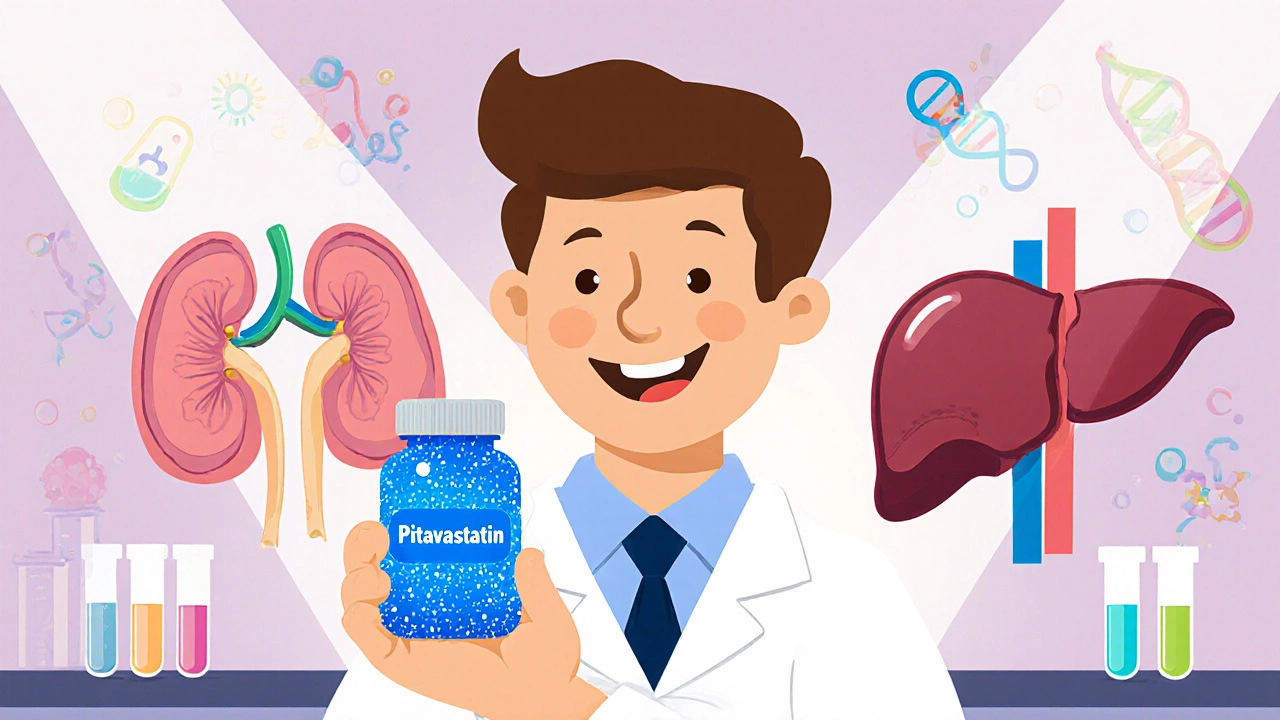Statin Metabolic Effects: What You Need to Know
When looking at statin metabolic effects, the ways statins change the body’s chemistry, especially how lipids and energy pathways are handled. Also known as statin‑induced metabolic changes, they are a core part of modern heart‑health therapy. cholesterol, the fatty molecule that statins target to lower LDL levels is the most obvious piece of the puzzle. But the story doesn’t stop at blood tests; liver enzymes, biomarkers like ALT and AST that indicate how the liver processes the drug and muscle health, the risk of myalgia or more severe rhabdomyolysis also come into play. These entities create a network where statin metabolic effects influence heart risk, energy balance, and even vitamin‑like compounds such as CoQ10, a coenzyme important for mitochondrial function that can drop with statin use. Understanding how they fit together helps you weigh benefits against possible downsides.
Key Factors to Watch When Taking Statins
The first thing most doctors check is your baseline LDL cholesterol, the “bad” cholesterol linked to plaque buildup. If it’s high, the statin’s primary metabolic effect—blocking HMG‑CoA reductase—slashes the liver’s cholesterol production, which in turn lowers LDL in the bloodstream. This biochemical shift is the main reason statins cut heart‑attack risk. But because the liver is the workhorse that processes the drug, you’ll often see a repeat blood test for ALT, alanine transaminase, a liver enzyme that signals inflammation or injury after a few weeks. A modest rise is usually harmless; a big jump may mean the medication is too aggressive for your liver.
Muscle concerns are another frequent question. Statins can interfere with the same pathway that makes CoQ10, potentially leading to myalgia, muscle aches that some patients describe as a lingering soreness or, rarely, rhabdomyolysis, a serious breakdown of muscle tissue. The risk rises with higher doses, certain drug combinations, and underlying conditions like hypothyroidism. If you notice unexplained cramps, fatigue, or dark urine, these could be signs the metabolic impact on muscle is too strong. Many clinicians suggest a low‑dose trial, switching to a different statin, or adding a CoQ10 supplement to balance the effect.
Beyond the liver and muscles, statins play a subtle role in glucose metabolism. Some studies show a small increase in blood‑sugar levels, which can matter for people on the edge of pre‑diabetes. The mechanism is thought to involve altered insulin signaling as a side‑effect of the same cholesterol‑lowering pathway. If you have risk factors for diabetes, your doctor may monitor fasting glucose or HbA1c while you’re on a statin. This extra check doesn’t mean you have to stop the medication, but it adds another layer to the overall metabolic picture.
Finally, drug interactions can amplify or mute these metabolic effects. Certain antibiotics, antifungals, and even grapefruit juice can raise statin concentrations, making liver and muscle side‑effects more likely. On the flip side, some cholesterol‑lowering vaccines or PCSK9 inhibitors may be combined safely to achieve deeper LDL reductions without upping the statin dose. Knowing which substances influence the metabolism of statins helps you avoid surprises.
All these pieces—cholesterol lowering, liver enzyme monitoring, muscle health, CoQ10 balance, glucose changes, and interaction alerts—form a web of metabolic effects that clinicians track to keep you safe. Below you’ll find a curated set of articles that dig deeper into each of these areas, from real‑world patient stories to detailed drug‑comparison guides. Dive in to see how the science translates into practical advice for managing your statin therapy.

